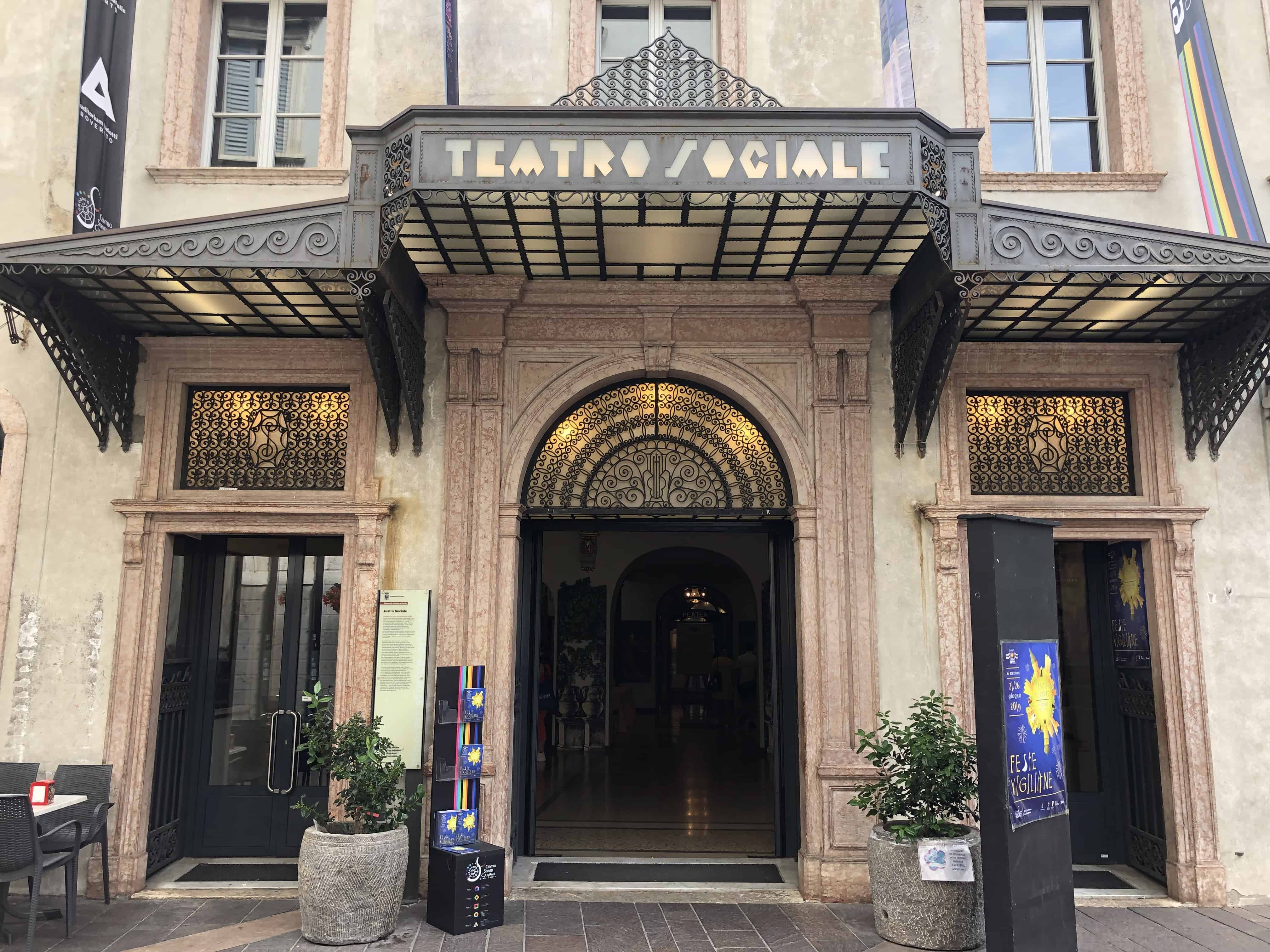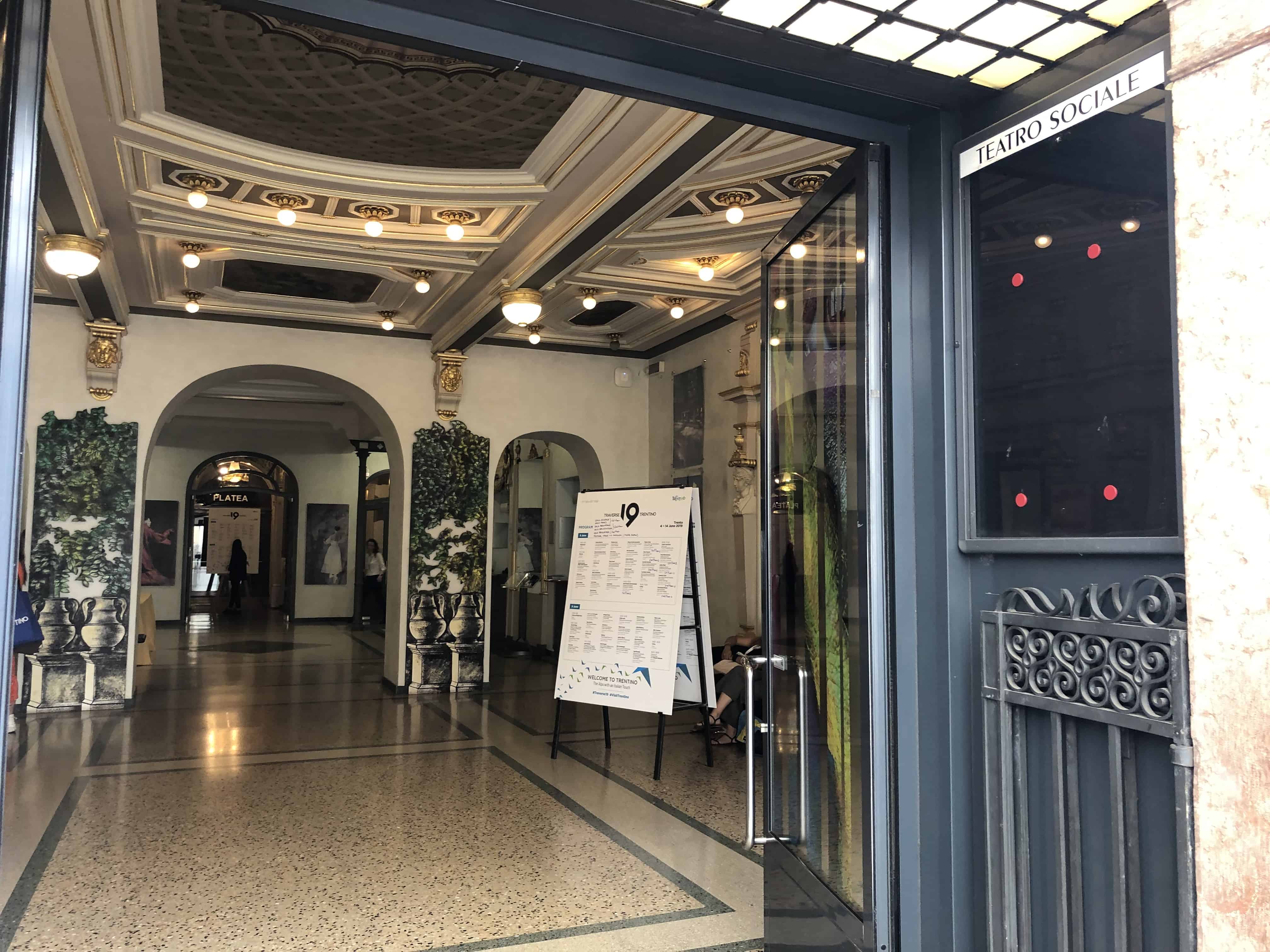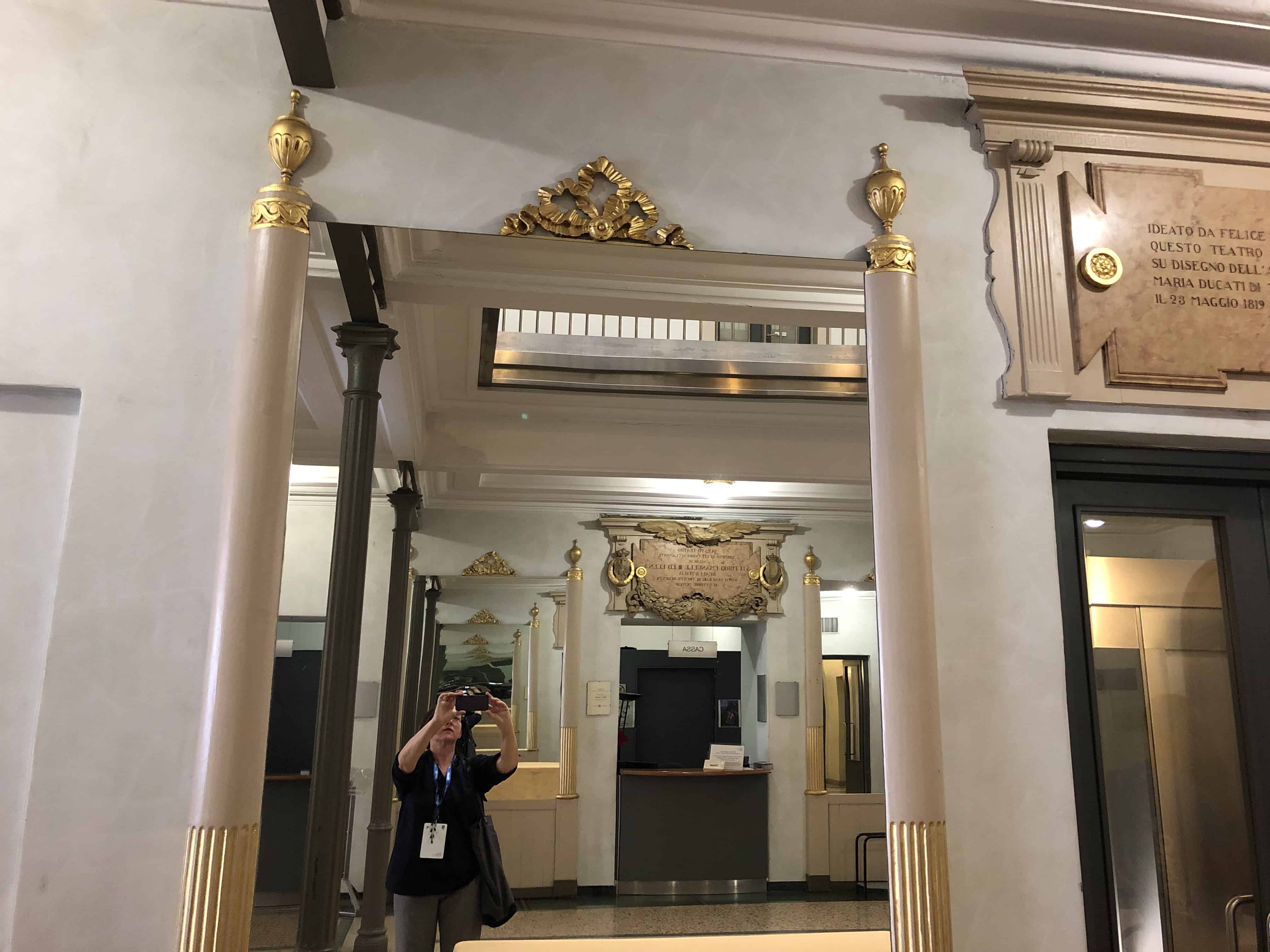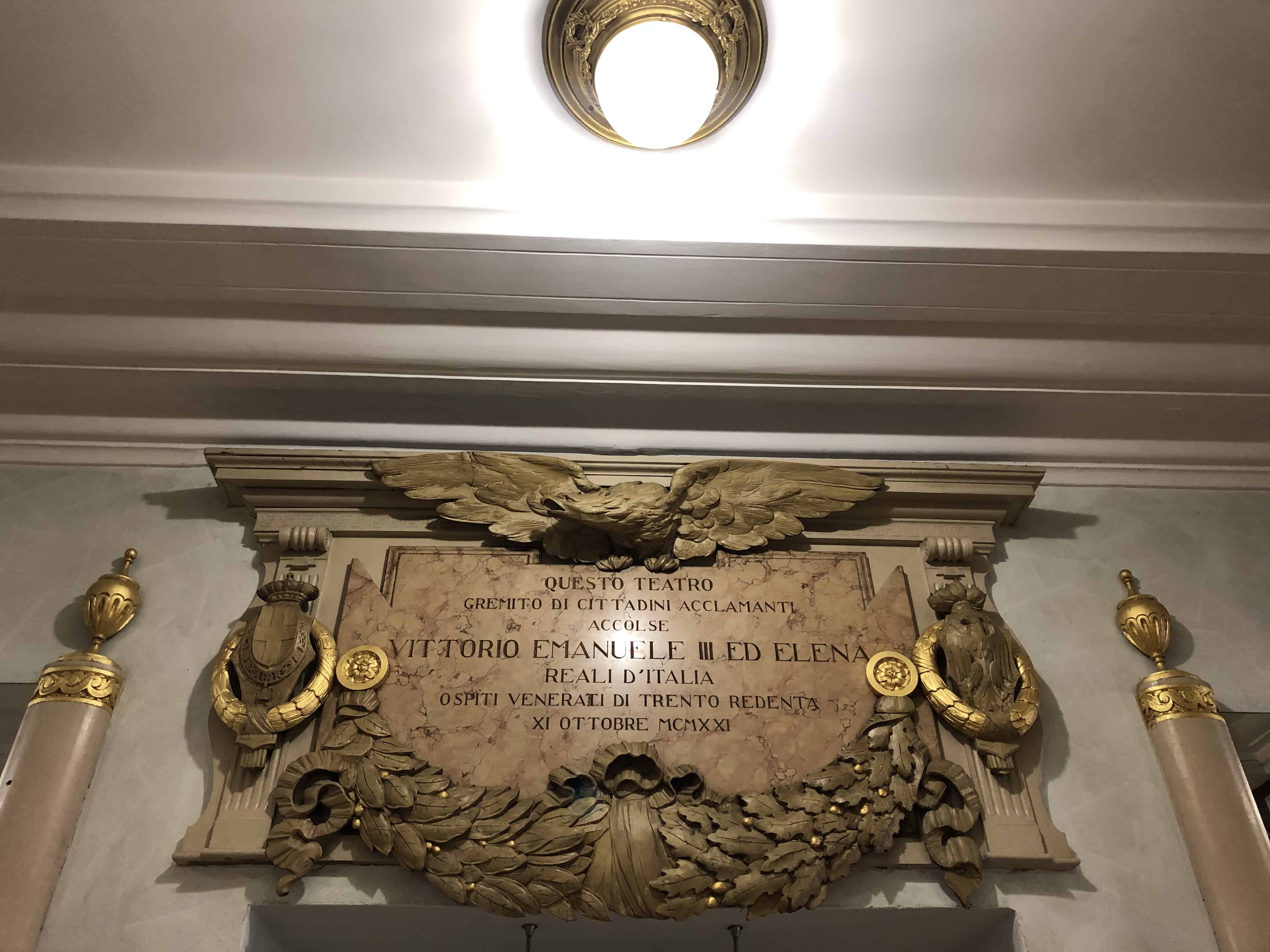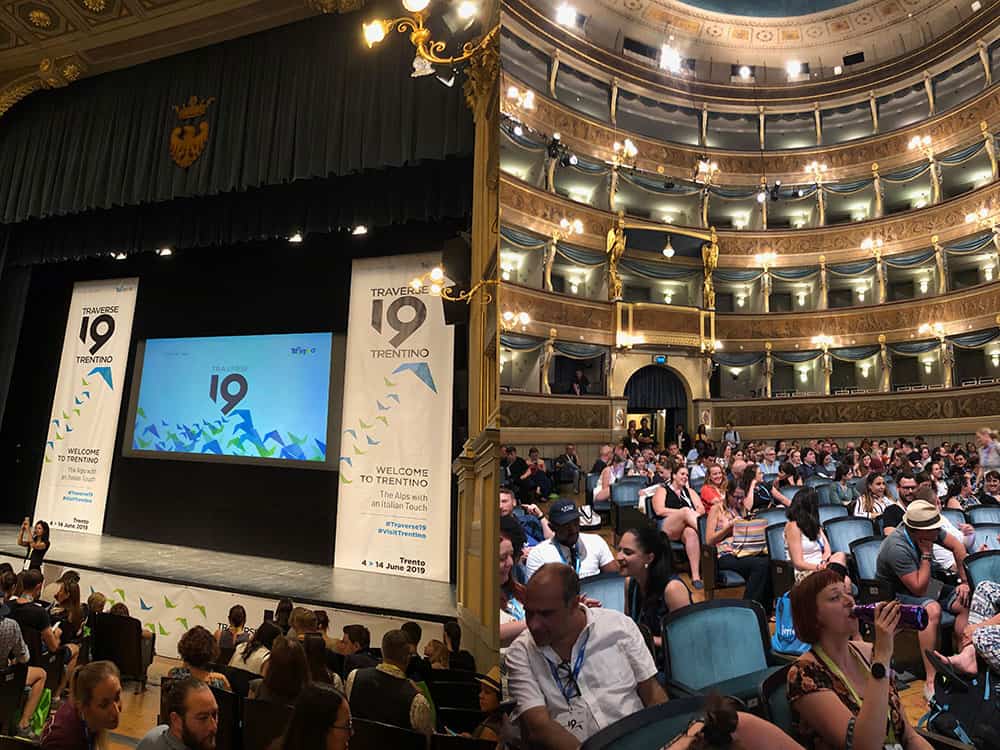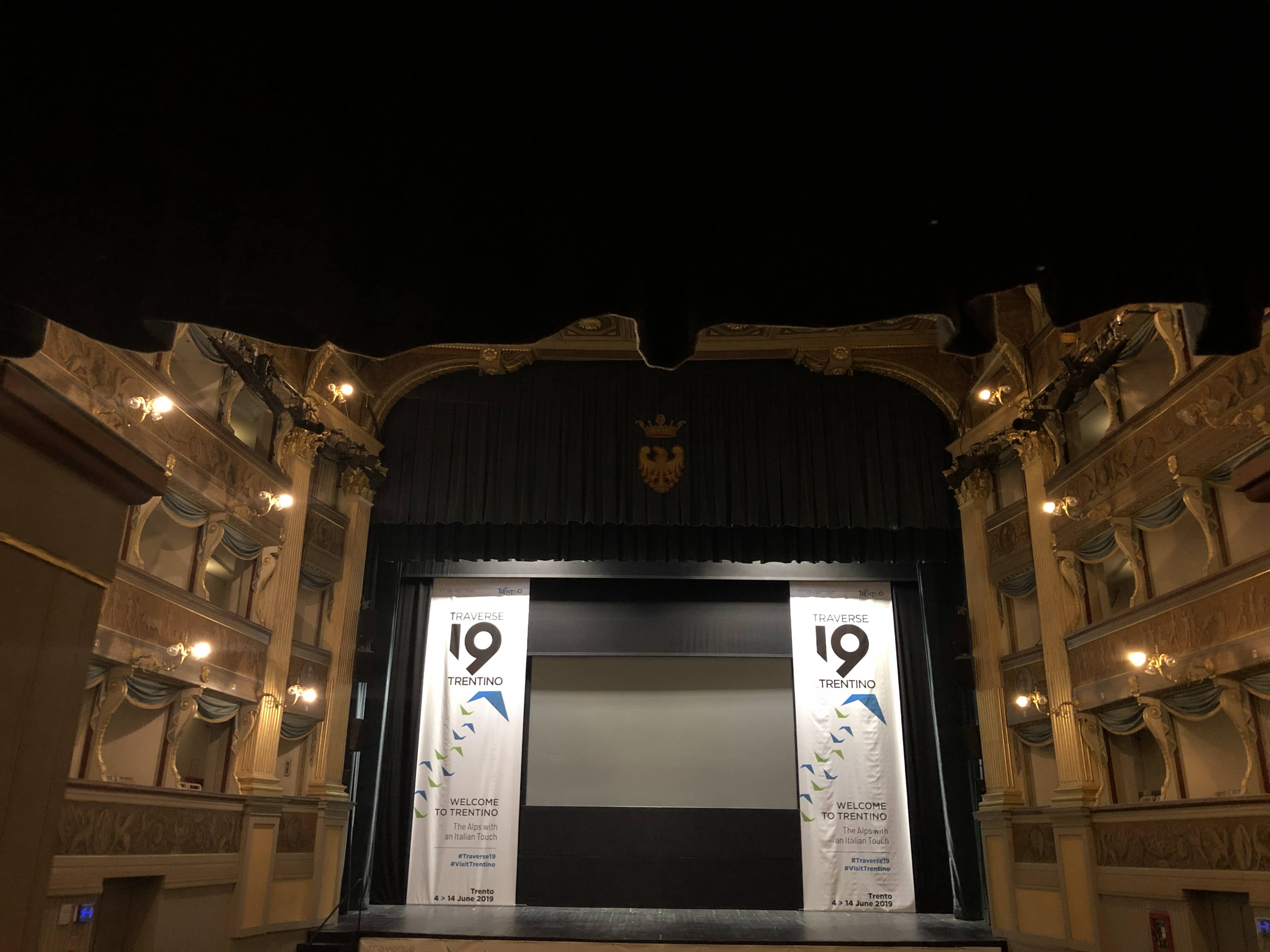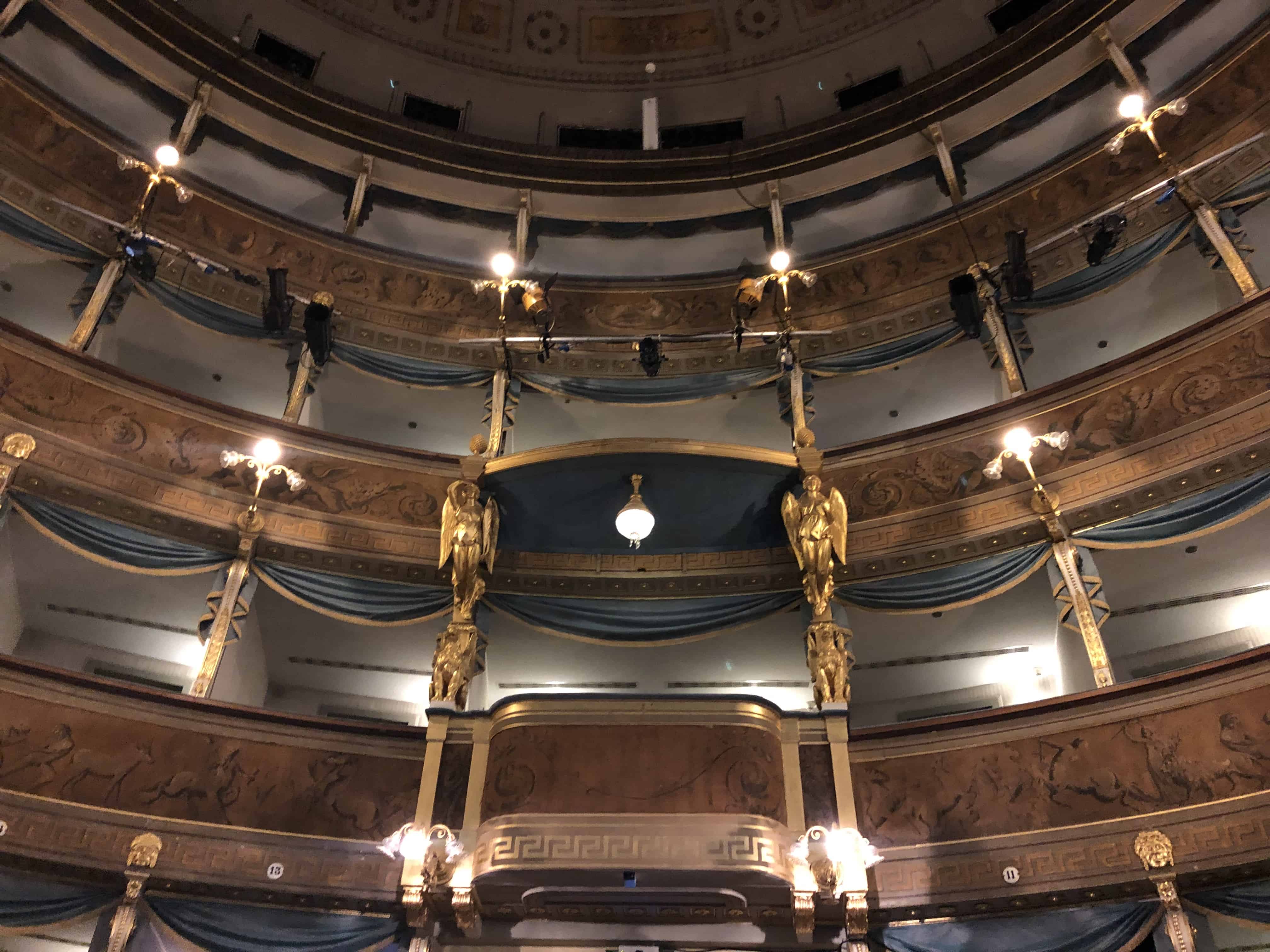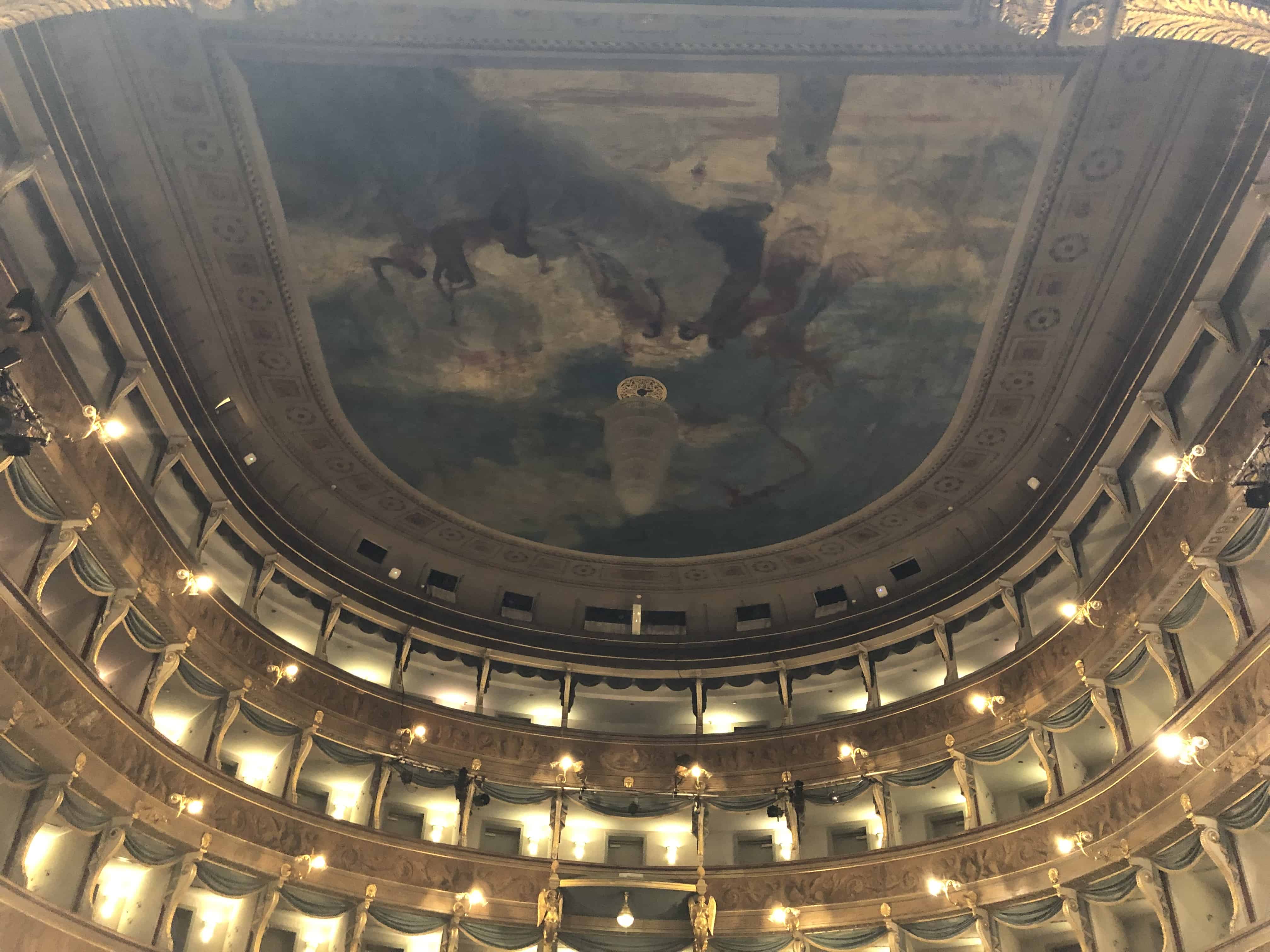Trento’s Teatro Sociale : A perfect backdrop for Traverse19 the choice traveller bloggers event
Coming back from Traverse19, the traveller bloggers festival that took place last weekend, I want to honor the city of Trento, which hosted us in one of the historical places that well represent the affection of Trento to culture: it Social Theater.
It is a classic Italian theater, with a vaguely neoclassical architectural approach, with a deep stage, a good capacity, its “Palco Reale“, an imposing chandelier, golden decorations and beautiful frescos in the ceiling but It was long considered the most beautiful theater in Tyrol.
It is quite curious to know that in the subsoil important pieces of the building fabric of the Roman Tridentum were discovered with a paved stretch of road, a Domus with mosaics, a craft workshop, and traces of medieval renovations.
As you walk around you can perceive the presence of Roman ruins through the glass frames distribute here and there in the conference rooms.
The history of the social theater of Trento is a story with a happy ending that spans over the life of the city from the beginning of 1800 to today.
The theater was built by a private citizen, Felice Mazzurana, who was also its first owner and its activities started 1819 with the show
“La Cenerentola” by Gioachino Rossini.
Mazzurana believed that Trento was missing a “Real theater” and when the building was completed, he succeeded in selling, in one day, almost all the theater boxes to the rich city families.
In 1835 the theater changed its name to Teatro Sociale and the management passed from Mazzurana to the Società del Teatro.
In 1881 the theater underwent a first restructuring curated by Count Manci and in 1893 the second representation of Manon Lescaut took place there with the presence of the opera author, Giacomo Puccini. These were the golden years of the late nineteenth century, la Belle Epoque when Verdi works came to Trento under the directing of Arturo Toscanini.
Then with the First World War, arrived the closing of the theater and its transformation into a military warehouse.
In 1924 the venue underwent another restoration which signed the beginning of a new era, the cinema. For 60 years the Teatro Sociale hosted prose, opera, and cinema until 1984 when, the impresario Zuliani, unable to bear the costs of the restoration, decided to sell it to the Province Trento which later granted it to the Municipality of Trento.
This ownership change prevented the risk of the theater being turned into a department store
The last restoration, which ended in 2000, gave us back the structure that we see today and we have attended in these days both in his main hall dedicated to entertainment activities and in all the other rooms where the conferences were presented.
Thanks again to Traverse for letting us discover a small Italian jewel and for the city of Trento that hosted this event
Betti
For more articles from the Trento region check out our coverage of the Besano Castle and Fortunato Depero’s Museum
Short video I did before the opening ceremony
[socialWarfare]

